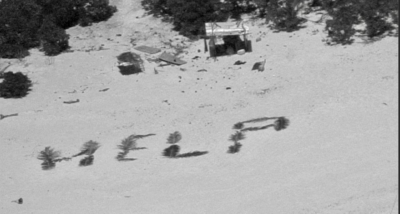You’re always told to be careful and play close attention to what you’re doing, especially if it’s dangerous. Get your head in the game. This applies to everything you do onboard.
All of this pertains to the general term “situational awareness.” I have yet to be told to pay close attention, but not too close. Too close attention?
What?
Target fixation is what happens when you get so focused on an object or task that you lose track of the big picture of situational awareness. You become so fixated on the task or target that you become mesmerized and forget to actually avoid an accident. In World War II, dive-bombers sometimes got so fixated on the bombing run and target they forgot to fly the plane and actually crashed it into the ground. If you’re a biker, especially a motorcyclist, you can get fixated on the direction and path you’re going. You become completely unaware of dangers on your sides, and then you hit it or get run over by it.
An example is Rule 5 of the COLREGS. It tells us to maintain a proper, sharp, and close lookout. So how can a lookout be too sharp or too close and be dangerous?
Several times my deck watch officers were so focused on a red running light crossing the starboard bow that nobody noticed the green running light about to come aboard on the port side. They forgot to look out all of the bridge windows or had their head buried in the scope. However, they sure weren’t going to run afoul of the stand on vessel with the red running light, no matter what! We never hit anything or got run over, but as the captain, it was unnerving that I was the first and last guy to see the other dangers that the watch officers’ tunnel vision had completely missed. They were paying too close attention to one contact, missing the big picture around them.
Target fixation can happen anytime, anywhere and to anyone.
Here’s a recent incident where paying “too close” attention and falling into that black hole of tunnel vision caused an accident with a lot of blood.
The victim was doing a little woodworking to spruce up the boat. He was well qualified and had many years of experience in a wood shop without accident or injury. He had his full PPE on, carefully laid out the cut, and took quite a while to safely set up the table saw. All the machine guards were in place. There was a push stick for those last few inches near the spinning blade. Our victim carefully began to rip the plank paying very close attention to the cut. He tried to use a push stick, but the long board drooped off the table. He carefully stepped around to the other side of the saw to push the plank down flat to pull it through those last few inches. He was fixated on doing it safety.
As the victim pushed the plank flat on the saw table, the blade chewed off the tips of three of his fingers. There was a lot of blood but no fingers were actually cut off. He should heal in a couple of months. He was another victim of target fixation who lost sight of the big safety picture.
This blog took a while to write because only two fingers on my hand work correctly and the bandage really gets in the way.
Sail safe!




